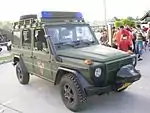Croatian Army
The Croatian Army (Croatian: Hrvatska vojska or HV) and Croatian Ground Army (Croatian: Hrvatska kopnena vojska or HKoV) is the largest and most significant component of the Croatian Armed Forces (CAF).
| Croatian Army | |
|---|---|
| Hrvatska vojska | |
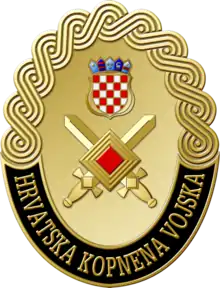 Emblem of the Croatian Army | |
| Founded | 1991 |
| Country | Croatia |
| Type | Army |
| Size | 12,494 personnel As of 2019[1] |
| Part of | Republic of Croatia Armed Forces |
| H/Q | Karlovac |
| Motto(s) | "Domovini vjerni" (Faithful to Homeland) |
| March | Mi smo garda hrvatska (We are the Croatian guard) |
| Anniversaries | 28 May |
| Equipment | 72 x MBT[2] 623 x IFV & APC 350 x artillery pieces, mortars |
| Engagements | Croatian War of Independence:
War in Iraq |
| Commanders | |
| Current commander | Major general Boris Šerić |
| Notable commanders | General Martin Špegelj, General Janko Bobetko, General Petar Stipetić, General Zvonimir Červenko, Lieutenant General Ante Gotovina, Lieutenant General Marijan Mareković, Lieutenant General Mladen Kruljac |
Role and deployment
The fundamental role and purpose of the Croatian Army is to protect vital national interests of the Republic of Croatia and defend the sovereignty and territorial integrity of the state.
The Croatian Army's primary tasks are to:[3]
- Defend against possible aggression at strategic operational levels and to defend against any land, air, or amphibious assault, in co-operation with the other branches of the CAF.
- Help allies and friendly countries in time of need.
- Build the capability to carry out non-traditional tasks such as humanitarian support during floods, fires, and other natural disasters.
North Atlantic Treaty Organisation (NATO)
The Croatian Army has contributed to the following NATO missions:
- NATO EFP Battlegroups (Lithuania & Poland) - 2017
- Operation Resolute Support (Afghanistan) - since 2015
- NATO International Security and Assistance Force (ISAF) (Afghanistan) - from 2003 to 2014
United Nations (UN)
The Croatian Army was involved in the following UN missions as of December 2017:
- UN Mission for the Referendum in Western Sahara (MINURSO): seven military observers
- UN Interim Force in Lebanon (UNIFIL): one staff officer
- UN Military Observer Group in India and Pakistan (UNMOGIP): nine military observers
In the past, the Croatian Army has also contributed to:
History
The Croatian Army was formed in the Croatian War of Independence, when, on November 3, 1991, the Croatian National Guard was renamed the Croatian Army.
Numerous Croatian army units arose from the Croatian National Guard, including:
- 1st Croatian Guards Corps
- 1st Guards Brigade (Croatia)
- 2nd Guards Brigade (Croatia)
- 3rd Guards Brigade (Croatia)
- 4th Guards Brigade (Croatia)
- 7th Guards Brigade (Croatia)
- Croatian 104th Brigade
- 204th Vukovar Brigade
The locally based regiments were named the Home Guard Regiments (Domobranska pukovnija). They were created on 24 December 1991, during the war, and ceased to exist in a 2003 reorganization.[4]
Key: red – mech, gold – armoured
Organizational structure and status
The Croatian Army is an all-volunteer force numbering 7,514 active duty personnel and 193 civil servants and employees as of August 2016.[1] The Army can also call on 6,000 reserve personnel who serve up to 30 days every year.

The Croatian Army is being reorganized to fit in the NATO doctrine of a small, highly capable force with an emphasis on mobility and versatility.
Major combatant commands of the Croatian Army are one armored and one mechanized brigade, each brigade having a specific role and different responsibilities. In 2012, one motorized infantry company is to be detached and put under the command of the EU Battle Group led by Germany. Croatia continues to deploy 350 personnel in support of NATO International Security Assistance Force in Afghanistan.
Croatia achieved NATO membership in April 2009. The defence reforms that Croatia initiated in 2000 have a long-term goal of replacing and modernizing the armed forces to meet the challenges of NATO membership. The plan calls for the modernization of the Army and the introduction of training and doctrine in line with Western (NATO) standards. Replacing ex-Yugoslav/Soviet hardware is also one of the main priorities.
There are various ongoing initiatives, such as the upgrade of the tank fleet, introduction of new Armored Personnel Carriers and NATO standard assault rifles, etc. Procurement of new, NATO-compatible equipment takes a significant part of the defense budget.
Until less than a decade ago, Croatia had operated just under 280 main battle tanks, but this number decreased significantly due to the withdrawal of roughly 200 obsolete T-55 tanks in 2006. Most of these units have been scrapped, but a limited number have been stored as operational reserve in case of need. The mainstay now are the M-84A4 Sniper main battle tanks which are currently undergoing overhauls. However, modernization of the tank fleet to the M-84D standard is also envisaged.
In July 2007 Patria AMV won the contract to supply the next generation of APCs to the Croatian Army. Only 84 vehicles were ordered at first with an additional 42 purchased in an extended contract signed in December 2008. Croatia now operates 126 units with the first six vehicles manufactured in Finland and delivered by late 2008. All remaining vehicles have been locally produced by 2014. Out of a total of 126 units, 112 are armed with 12,7 Protector (RWS) remote controlled stations.
In early 2007, Croatia bought 10 Iveco LMV light armoured vehicles at a cost of 330,000 Euros per unit. According to official documents, 94 of these vehicles were needed by 2017. However, Croatia now relies on over 200 US-donated HMMWV and MRAP type vehicles.
Steps have been made to standardize the difficult-to-maintain vehicle inventory of the Croatian military, which is full of various models of different origin, type and age. Starting with 2005, the Army bought 152 light trucks and vehicles, 156 in 2006 with an additional 170 obtained by the end of 2007. All vehicles are from prominent European or Japanese manufacturers including Mercedes-Benz, Land Rover, Iveco, MAN, Toyota and Nissan. These purchases are an ongoing process seen as roughly 150-180 new terrain vehicles are procured annually.
The Croatian Army is introducing a new assault rifle in 5.56mm NATO caliber to replace large stocks of AK-47 and its derivatives. The chosen model is the locally manufactured VHS developed by HS Produkt. The initial batch of 1,000 rifles was ordered in 2009–2010 with the requirement for up to 20,000 rifles. The MoD press and photo releases from regular training activities indicate that the VHS had been issued to elements of the Military Intelligence Battalion, Combat Swimmer Detachment of the Special Forces Battalion, as well as to one of the infantry companies of the Guards Mechanized Brigade as early as 2011.
Order of battle

- Land Forces Command (Karlovac)[5]
- Armored Mechanized Guard Brigade (GOMBR) - (Vinkovci)
- Headquarters Company (Vinkovci)
- Tank Battalion "Kune" (Đakovo)
- Armored Battalion of the Guards Armored Mechanized Brigade
- 1st Mechanized Battalion "Sokolovi" (Našice)
- 2nd Mechanized Battalion "Pume" (Varaždin )
- Mixed Artillery Battalion (Bjelovar)
- Air Defence Battalion (Vinkovci)
- Engineer Battalion (Vinkovci)
- Reconnaissance Company (Vinkovci)
- Signals Company (Vinkovci)
- Logistics Company (Vinkovci)
- Mechanized Guard Brigade - Medium Mechanized Brigade (Knin)
- Headquarters & Headquarters Company
- 1st Mechanized Battalion "Tigrovi" (Petrinja)
- 2nd Mechanized Battalion "Gromovi" (Petrinja)
- 3rd Mechanized Battalion "Pauci" (Knin)
- Motorized Battalion "Vukovi" (Gospić)
- Mixed Artillery Battalion (Karlovac/Slunj)
- Air Defence Battalion (Benkovac)
- Engineer Battalion (Sinj)
- Reconnaissance Company
- Signals Company
- Logistics Company
- Training and Doctrine Command "Fran Krsto Frankopan" (Osijek)
- Command Company (Osijek)
- Infantry Regiment (Petrinja)
- Artillery Regiment (Bjelovar)
- Engineer Regiment (Karlovac)
- Logistics Regiment (Benkovac)
- Basic Training Centre (Požega)
- Combat Training Center (Slunj)
- Simulation Center (Zagreb)
- International Operations Training Center (Rakitje)
- Armored Mechanized Guard Brigade (GOMBR) - (Vinkovci)
- Military Police Regiment (Ogulin/Karlovac)
- Signals Regiment (Karlovac)
- Military Intelligence Battalion (Zagreb)
- NBC Defence Battalion (Dugo Selo)
- Special Operations Forces Command (Delnice)
- Air Defence Regiment (Zadar)
- Command Battery (Zemunik)
- 1st Mixed Battalion (Zemunik)
- 2nd Mixed Battalion (Udbina)
- 3rd Mixed Battalion (Zagreb)
- Signals Battalion (Velika Gorica)
Training Grounds
- Eugen Kvaternik Training Grounds (Slunj)
- Crvena Zemlja Training Grounds (Knin)
- Gašinci Training Grounds (Đakovo)
Operational art and tactical doctrine
Building on NATO's Partnership for Peace assistance programmes and full NATO membership since 2009, the Croatian Army has embraced the alliance concepts of the 24-hour, three-dimensional battlefield and the employment of highly trained and motivated forces equipped to deploy rapidly and operate with flexibility as part of a larger multinational force.[3]
The Croatian Army is also working more closely with the air force and navy, resulting in more multi-phased operations with detailed ground/air coordination, but more needs to be done at all echelons to achieve a deeper level of jointness. In all of these activities, the land forces are in the lead.[3]
Modernization plans
.jpg.webp)


In past decade or so, Croatian Army underwent significant changes, modernisation of the armed forces albeit at the much slower pace then anticipated due to economic recession at the start of this decade, caused realignment of Croatia's priorities, Croatia's military subsequently faced significant cutbacks and reduction in expenditure or purchase of new armaments. However, as a result of NATO membership, Croatia agreed to fulfill some of the operational responsibilities towards NATO, this includes formation of two mechanised brigades, with emphasis on equipping both brigades with NATO standard equipment.
Procurement of heavy weapons is still lagging behind due to shortage of funding for the armed forces, however donations by the US Armed Forces have helped Croatia to gap some of the shortfalls. Purchase of 126 Patria AMV APCs allowed for light mechanized brigade to replace old Yugoslav and Soviet era weapon systems that saw little use with in NATO. However, the Heavy Mechanized brigade still relies heavily on Soviet and Yugoslav-era weapons systems and modernization of that brigade is one of the priorities for current government. Equipping the brigade with a modern Infantry Fighting Vehicle such as M2 Bradley, would go long way in fulfilling that task. Modernization of Croatia's M-84 main battle tanks due to significant costs but also lack of interoperability within NATO has been dropped and alternatives are being sought, Leopard 2 most likely being the only choice for the armed forces, however lack of funding ensures this remains only a distant dream at this stage.
Current plans call for establishment of a 3rd mechanized battalion with in Heavy Mechanized Brigade due to NATO requirement for such unit. 60 Additional Patria AMV will be ordered to fulfill requirements for Heavy Mechanized Brigade, additional PzH 2000 howitzers are likely to be purchased from Germany to meet the NATO requirement for a 2nd Armored Battalion. Additional light mine protected vehicles to be sought from US, to meet the NATO requirements for ISTAR capability and number of drones and UAVs to be purchased as part of this capability. Army will try to update its current logistic's requirement with a purchase of up to 500 new military trucks, 300 light off-road vehicles and number of other support vehicles. This is likely to take at least a decade due to shortage of funds. Purchase of 30mm RCWS is a priority, 16 of which are already on order, requirement calls for 64 RCWS, this also includes purchase of modern anti tank system for the armed forces to replace current Soviet era systems that are nearing their use date. Army also plans to purchase modern western medium range Surface to air system, with NASAMS 2 being the most likely choice, however shortage of funds might delay the purchase until late 2020s.
The budget should slowly increase due to NATO requirement for all its members to spend at least 2% of GDP on defense. Croatia plans to meet that target by around 2025, by which point Croatian economy is expected to reach around 550 billion kuna or just under $90 billion at current exchange rate. With more funds it is hopped Croatia could modernize most of its armed forces to NATO standard without US assistance by this point. Currently the US has aided Croatian Armed Forces modernization and training in tune of around €120 million per year since 2015 and is expected to increase these slightly in coming years as Croatia is about to purchase UH-60 Black Hawk helicopters and number of other systems.
Other programs:
- Equipping motorized infantry battalion (800-1,000 men) with night vision equipment, including advanced optoelectronics and sensors, ground radars, thermal imaging cameras – 120 million Croatian Kuna
- NBC equipment for biological/chemical-decontamination unit – 150 million Croatian Kuna
- Procurement of new army engineering vehicles, armored recovery vehicles, mine clearance vehicles and armored personal vehicles designed to withstand mine blasts – 320 million Croatian Kuna
- Procurement of modern communication and battlefield management systems –
- Procurement of new logistic and amphibious vehicles – 250 million Croatian Kuna
- Procurement of 3-4 Artillery Radars – 30–40 million Croatian Kuna
- Procurement of 8-12 Mobile air defense radars – 200 to 300 million Croatian Kuna
- Procurement of Army Field Hospital - 80 to 100 million Croatian Kuna
- Procurement of 16 Army Tank transporters, Heavy Equipment Transporters – 80 to 100 million Croatian Kuna
- Procurement of Bridge laying equipment – 100 million Croatian Kuna
Equipment
Handguns
The Croatian Army's requirement for personal protection side arms is being fulfilled by the locally produced HS2000 hand gun design, which has also become increasingly popular in the United States and elsewhere.
| Model | Image | Caliber | Origin | Quantity | Note |
|---|---|---|---|---|---|
| HS Produkt HS[6] |  | 9×19mm | 40,000 | standard sidearm | |
| HS Produkt XDM |  | 9×19mm | 20,000 | standard sidearm |
Submachine guns
| Model | Image | Caliber | Origin | Quantity | Note |
|---|---|---|---|---|---|
| Heckler & Koch MP5[7] |  | 9×19mm | 80-100 | Used by special forces and anti terrorist police | |
| Arma ERO[7] | .jpg.webp) | 9×19mm | 500~ | Unlicensed copy of the IMI Uzi submachine gun. Used by special forces and anti terrorist police |
Assault rifles
The Croatian Army's current 2 standard assault rifles are the VHS and VHS2. The VHS's family of assault rifles replaced M70 entirely in 2015. Croatian peacekeepers and serviceman who serve on NATO/EU missions tend to be supplied with the German-made H&K G36C rifle and, to a lesser extent, the US Colt M4 carbine.
The Croatian Army inherited large quantities of Yugoslav Army light infantry weaponry, much of it captured during the Battle of the Barracks. These were supplemented by indigenous designs, some of which were very successful and found export markets. During the 1990s, these were perfectly acceptable light infantry weapons; however, with Croatia's entry into NATO, many older Yugoslav-era designs were seen as redundant and surplus to the requirement. Croatia has acquired a substantial quantity of Sako TRG 42 sniper rifles with the aim of equipping the current army (around 7 infantry battalions) with 32 Sako TRG 42 sniper rifles per battalion. Additional equipment, such as optics and grenade launchers, were also obtained from domestic and German suppliers. Machine guns inherited from the Yugoslav era are also being supplemented by a large number of western models, namely FN MAG, Ultimax 100, M249 light machine gun and, contentiously, an ever-growing quantity of M2 Browning machine guns (of which Croatia had some 570 examples at the end of 2010, but numbers are likely to grow to well over 800 by 2020 due to number of new armored vehicles being armed with remote overhead weapon stations.
As of late 2017, Croatian Army maintains over 15000 VHS/VHS2 assault rifles in service, of these more than half are newer model HSP VHS-2, with ground forces transitioning to only HSP VHS-2 with in next few years. Army will retain original VHS rifles in reserve, however Army plans to order up to 50 000 HSP VHS-2 rifles.
| Model | Image | Caliber | Origin | Quantity | Note |
|---|---|---|---|---|---|
| HS Produkt VHS |  | 5.56×45mm | 20,000~ VHS-2; 7,800 VHS; | 7800 VHS entered service by 2012, most are now relegated to reserve status with VHS-2 currently main service weapon of the infantry formations[8] 500 VHS Rifles intended for Croatian Army sold to US DOD.[9][10][11] Army Order for 300 VHS-2 Rifles made with future order for 20 000 VHS-2 agreed. VHS-2 Rifles to replace VHS which will be relegated in to reserve status.[12] | |
| Heckler & Koch G36[13] |  | 5.56×45mm | 750 | Used by peacekeepers, special Forces and Ministry of the Interior, additional 200 acquired for MUP for total of 750. | |
| Heckler & Koch HK416 |  | 5.56×45mm | 550[14] | Used by peacekeepers, ISFOR and Special Forces in Croatia. New order for 250 Heckler & Koch HK416 and 100 Heckler & Koch HK417 for delivery in 2018. | |
| FN F2000 |  | 5.56×45mm | 100 | Bought for evaluation but not adopted, currently in limited use | |
| Colt M4[13] | 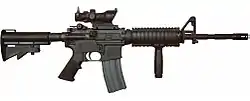 | 5.56×45mm | 200 | Acquired in mid 2000-s, used by Special forces and Military police for weapons familirization[15] | |
| Zastava M70 |  | 7.62×39mm | 640 | Around 88,000 stored and offered for sale, 44,000 sold to Afghanistan in 2010, 4000 donated to Mali in 2013,[16] some 6000 rifles sold to Syrian Rebels via Jordan and Saudi Arabia. Completely withdrawn from use by the end of 2015, however some 640~ left for use in opfor training.[17][18] |
Sniper rifles
| Model | Image | Caliber | Origin | Quantity | Note |
|---|---|---|---|---|---|
| Sako TRG-42 |  | 8.6×70mm | 240 | Standard sniper rifle of Croatian Army replacing older models. | |
| Heckler & Koch HK417 |  | 7.62×51mm | 150~ | Standard light Assaulter sniper rifle of Croatian Army, used as designated marksman rifle with in Croatian Army. More to be acquired. | |
| Remington M40A5 |  | 7.62×51mm | 70~ | 100~ older A1 models being phased out, with few remaining for familiarization and training.[19] | |
| Barrett M82 | 12.7×99mm | 24~ | Anti-materiel rifle, a dozen or so kept in reserve status. | ||
| SCAM Marine MACS M3 |  | 12.7×99mm | 20~ | Standard high caliber sniper rifle,[20] supplements Sako TRG. | |
| Metallic RT-20 |  | 20×110mm | 3~4 | Anti-materiel rifle, only few samples in service.[21][22] |
Grenade launchers
| Model | Image | Caliber | Origin | Quantity | Note |
|---|---|---|---|---|---|
| Metallic RBG-6 |  | 40×46mm | 124 | 112 with Croatian Army and 12 with special forces and anti terrorist units.[23] | |
| Heckler & Koch AG36 |  | 40×46mm | 300 | Comes as standard with all H&K G36C deployed in ISAF and other NATO/EU missions. | |
| Mk 19 grenade launcher |  | 40×53mm | 92+ | For the first time seen in the public at recent Military parade held in Zagreb, 32 weapons purchased for 4.8 million kuna. Mounted on to MATV and M1151 Up-Armored Capable HMMWV vehicles. More to be purchased, requirement calls for 224 weapon systems.[24][25][26] |
Machine guns
| Model | Image | Caliber | Origin | Quantity | Note |
|---|---|---|---|---|---|
| Browning M2 |  | 12.7×99mm | 700+ | Mostly mounted on armoured vehicles and tanks, including as remote weapon stations, of which 120+ are in use with the Croatian Army, more to be acquired. | |
| M240 |  | 7.62×51mm | 13+ | Donated by US govnerment with 13 Humvve-s, but used on PZH 2000 instead. | |
| FN M249 |  | 5.56×45mm | 100+ | More to be acquired.[27] Croatian HS Product secured licence for production in Croatia for needs of Croatian Army, requirements for at least 500 weapons to supplement Ultimax100 and replace aging Heckler & Koch HK21. | |
| Ultimax 100 |  | 5.56×45mm | 100 | Acquired in early 1990s together with SAR 80 rifles. The total quantity included 120 Ultimax 100 and 600 Sar 80. It is still used for training. | |
| Heckler & Koch HK21 | 5.56×45mm | 300 | Acquired in mid 1990s, supplements M84 in EUBG units.[28] |
Tanks
On April 24, 2013 the Defence Minister signed a memorandum with Đuro Đaković – Specijalna vozila for the upkeep, maintenance and modernization of the M-84 fleet (48 tanks) with the aim to improve the serviceability of the fleet.[29] According to current plans only 4 tanks are to be fully overhauled at cost of $1.8 million or $450,000 per tank with potential for further 44 tanks to be fully overhauled by late 2020 at cost of $20 million or 110 million Kuna.
Long-term plans regarding the future role of M-84 tanks in Croatian Army is to be defined by MOD. The new proposed defence white paper envisages only a fleet of 48 tanks.[30] Public consultation is being held as to what direction will be taken in regards to current tank fleet, purchase of new western tanks or further modernization to M-84D (A5) standard. In 2020 MOD announced the end of general revision and start of modernization.[31]
| Model | Image | Type | Origin | Number | Details | ||||||||||||||||||||||||||||||||||||||||||||||||||||||||||||||||||||||||||||||||||||||||||||||||||||||||||||||||||||||||||||||||||||||||||||||||||||||||||||||||||||||||||||||||||||||||||||||||||||||||||||||||||||||||||||||||||||||||||||||||||||||||||||||||||||||||||||||||||||||||||||||||||||||||||||||||||||||||||||||||||||||||||||||||||||||||||||||||||||||||||||||||||||||||||||||||||||||||||||||||||||||||||||||||||||||||||||||||||||||||||||||||||||||||||||||||||||||||||||||||||
|---|---|---|---|---|---|---|---|---|---|---|---|---|---|---|---|---|---|---|---|---|---|---|---|---|---|---|---|---|---|---|---|---|---|---|---|---|---|---|---|---|---|---|---|---|---|---|---|---|---|---|---|---|---|---|---|---|---|---|---|---|---|---|---|---|---|---|---|---|---|---|---|---|---|---|---|---|---|---|---|---|---|---|---|---|---|---|---|---|---|---|---|---|---|---|---|---|---|---|---|---|---|---|---|---|---|---|---|---|---|---|---|---|---|---|---|---|---|---|---|---|---|---|---|---|---|---|---|---|---|---|---|---|---|---|---|---|---|---|---|---|---|---|---|---|---|---|---|---|---|---|---|---|---|---|---|---|---|---|---|---|---|---|---|---|---|---|---|---|---|---|---|---|---|---|---|---|---|---|---|---|---|---|---|---|---|---|---|---|---|---|---|---|---|---|---|---|---|---|---|---|---|---|---|---|---|---|---|---|---|---|---|---|---|---|---|---|---|---|---|---|---|---|---|---|---|---|---|---|---|---|---|---|---|---|---|---|---|---|---|---|---|---|---|---|---|---|---|---|---|---|---|---|---|---|---|---|---|---|---|---|---|---|---|---|---|---|---|---|---|---|---|---|---|---|---|---|---|---|---|---|---|---|---|---|---|---|---|---|---|---|---|---|---|---|---|---|---|---|---|---|---|---|---|---|---|---|---|---|---|---|---|---|---|---|---|---|---|---|---|---|---|---|---|---|---|---|---|---|---|---|---|---|---|---|---|---|---|---|---|---|---|---|---|---|---|---|---|---|---|---|---|---|---|---|---|---|---|---|---|---|---|---|---|---|---|---|---|---|---|---|---|---|---|---|---|---|---|---|---|---|---|---|---|---|---|---|---|---|---|---|---|---|---|---|---|---|---|---|---|---|---|---|---|---|---|---|---|---|---|---|---|---|---|---|---|---|---|---|---|---|---|---|---|---|---|---|---|---|---|---|---|---|---|---|---|---|---|---|---|---|---|---|---|---|---|---|---|---|---|---|---|---|---|---|---|---|---|---|---|---|---|---|---|---|---|---|---|---|---|---|---|---|---|---|---|---|---|---|---|---|---|---|---|---|---|---|---|
| M-84A4 Sniper |  | MBT | 72 | All M-84A tanks brought to this standard by 2008 and are awaiting further upgrade. The fleet is undergoing limited overhaul with 4 tanks to be refurbished by the year's end at the cost of US$440,000 per vehicle.[32] 70 tanks are now used by tank battalion, and the other two are used as training vehicles on Croatian military college.|}
Tracked vehiclesThe Croatian Army relies on M-80A infantry fighting vehicles, of which there are 128 in service. These vehicles are deployed in two mechanized infantry battalions. Croatian MOD stated that the M-80 will be replaced at some point in the future and that there are no plans to modernize these vehicles. Due to increased defence expenditure, Croatian Government is considering a purchase of new infantry fighting vehicles, although previous SDP government was looking at Marder 1A3[33] as an interim solution. Current government is keen on brand new vehicle, however due to lack of funds options are limited. One of temporary measures Government is considering is purchase of Bradley M2 Infantry Fighting Vehicles (IFV) from US, under deal offered by US, Croatia would receive up to 64 Bradley M2 ODS and additional 24 M2s as spares, with Croatian Government responsible for upgrade and overhaul of said vehicles. as vehicles in question are a donation, Croatian government paying only for overhaul and VAT. It is not clear if these vehicles are a temporary measure until funds become available for purchase of modern vehicles such as Puma or CV90. However, these vehicles will not replace current M80A IFVs in service, they will just be added as a 3rd Mechanized Battalion to Medium Brigade, increasing the effectiveness of this particular combat brigade.
Wheeled armoured personnel vehiclesSince the purchase and equipping of 126 Patria AMV has been posing a significant financial strain on the military budget for quite some time now, the current needs of the Army are going to be met primarily by acquiring second-hand hardware from allied sources. NATO,[37] with the USA being the prime supplier of such vehicles. Previous needs for additional Patria IFVs and Iveco LMVs are now going to be met by introducing large numbers of Oshkosh M-ATVs of which 162 are to be introduced into service in 2014. Cost of the program is merely $10 million, with Croatian MOD only paying for the transport of said vehicles.[37]
Combat engineering vehicles
Anti-aircraft warfareUnder the newly proposed plan, the Croatian Army is set to revive its capability of hitting targets beyond the 10 km range. Current systems in service are all short-ranged with Strijela-10CROA1 (Croatian army's only SAM systems) having a maximum range of 7 km. The purchase of new systems will be highly dependent on price and support packages, with VL Mica, Crotale, SPYDER and NASAMS 2 being among most likely choices.
Anti-tank weaponsThe Croatian Army has relied heavily on Russian and domestically made anti-tank systems and rocket-propelled grenades, many of which by modern standards are obsolete or inadequate. The procurement of modern anti-tank system is being addressed and current plans call for the purchase of several dozen launchers for Patria AMVs which are to be fully integrated with 30mm remote controlled turret. Swedish AT4 systems are viewed as the future unguided anti-tank weapon of the Army and a certain number of these has already entered service. The unguided M80s are being relegated to reserve status while the other domestically manufactured RPG weapon, RL90 M95 is set to remain in active service for some time. Spike and Javlin being main contenders for Croatian army choice of next generation anti tank missile systems replacing older soviet made systems currently in service. up to €20 million order for launchers will be made in 2017, with up to 64 launchers being delivered to army. Longer term Croatian army requirements call for 200~ launchers including infantry and vehicle mounted.[51]
ArtilleryWith the end of the conflict in Croatia at the end of 1995 Croatia inherited large stockpile of Yugoslav era weapons systems. Decision was made to modify two battalions of D-30 HR M94 Soviet-made artillery systems to be compatible with NATO firing tables as an interim and cheap solution, with rest of the artillery stockpile kept in prepared state of reediness. The situation is very dire, with the Croatian Army having no artillery system capable of hitting targets beyond 20 km, to avert what was a serious shortcoming the Croatian MOD placed an order for modern NATO artillery system with capability that can exceeds 20 km range requirement. According to media reports, the Croatian MOD chose to purchase 12+3 Panzerhaubitze 2000 (or one battalion) howitzers from the German Army stock for $48 million. The system ended their deliveries in 2018, and all the support infrastructure required including training and logistic and supply trucks.[58][59][60][61] Mortars
Towed howitzers
Self-propelled howitzers
Rocket artillery
Unmanned aerial vehicleCroatian Army plans to purchase number of UAVs as part of ongoing modernization plans, longer term armed UAVs are also planned. Currently Army maintains number of UAV types with plans to purchase number of medium-sized UAVs for maritime and border surveillance. 6 Elbit's Orbiter 3b UAVs joined the service recently, however more of the same type are likely to join in coming years.
Logistical transports and multitask vehiclesThe logistic component of the Croatian Army is being renewed continuously and over the past decade a number of new vehicle have been procured. Stated requirement calls for 1,250 5-10 ton military trucks, 550 4WD Jeeps of all sorts and a number of other support and utility vehicles. In recent times, the Croatian MOD has signed procurement agreements with MAN, Iveco, Mercedes and Astra Iveco. Most notably in recent history was a corruption affair that resulted in the dismissal and subsequent custodial sentence for former defence minister Berislav Rončević who "approved procurement of 33 Iveco Astra Military Trucks at inflated price without holding a public procurement tender that is a standard procedure in any major defence procurement program".[72] The Croatian MoD has since purchased a number of new military trucks and 4WD vehicles through public procurement program; the latest being a 2011 procurement of some 80 Mercedes, MAN Trucks and 120 Toyota and Nissan 4WD vehicles. Although, as of late 2012, nearly half of the Croatian Army's logistics inventory is obsolete or near obsolete and in need of a replacement.[73] As of late 2012, the Croatian Army lacks some 400 Military trucks of all sorts. Also, many vehicles in the current stock are quite obsolete and in need of replacing. The problem is furthermore escalated by the fact that the Defence Budget for 2013 has been slashed by 250 million kuna, further reducing the probability of the Croatian Army receiving new logistic vehicles. The Croatian Army is now looking to acquire some German Army surplus stock, in good condition and available for use; 300–400 Army trucks are needed and it is likely they will all come from German Army surplus –most of them MAN KAT1 army trucks– and other unspecified vehicles indeed. Trucks and multiuse vehiclesCurrently the army is seeking to acquire a number of 5t, 7.5t and 12.5 ton trucks. Due to a shortage of funds, purchase of brand new equipment is difficult, although the army annually receives up to several dozen brand new specialist vehicles. When possible, the army tries to obtain 2nd hand vehicles from German, or other NATO member surplus stock. The army has a requirement for 1500 trucks of all sorts, however currently it lacks at least 500 trucks and heavy goods vehicles.
Military jeeps
Multiuse vehicles
Withdrawn from service or in storage
See also
References
|




.jpg.webp)


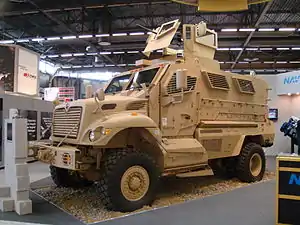








.jpg.webp)



.jpg.webp)
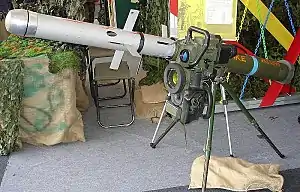

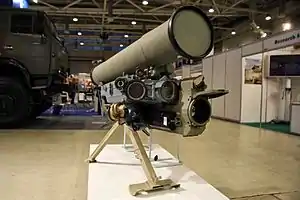







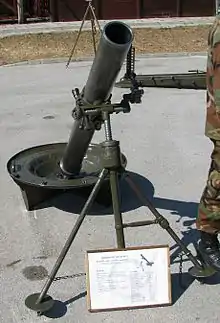

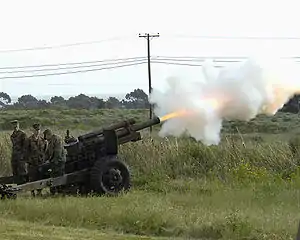

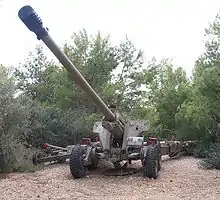







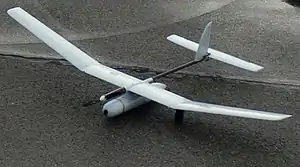

.jpg.webp)

.jpg.webp)
.jpg.webp)

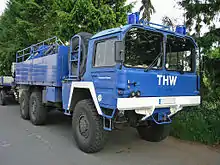

.jpg.webp)

.jpg.webp)


